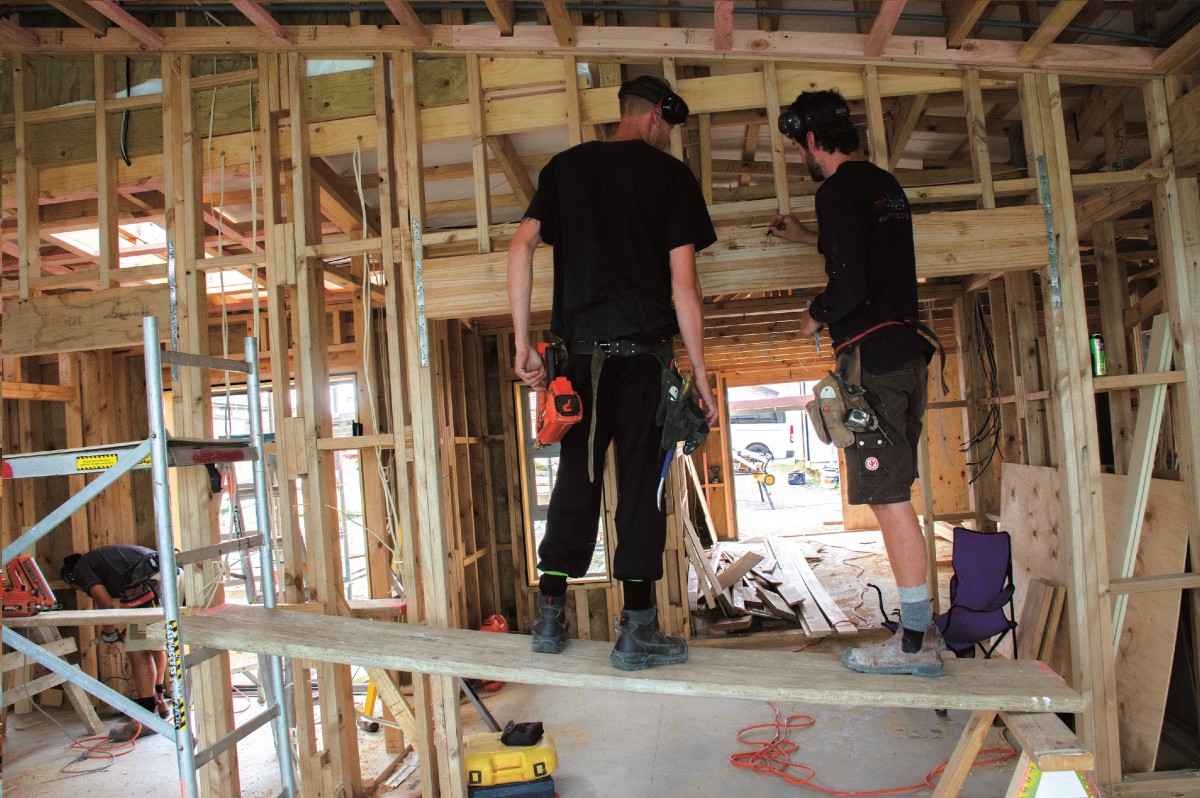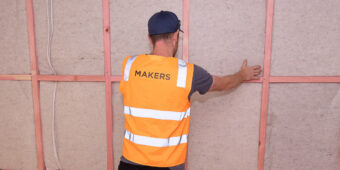Finding the boot that fits
27 Sep 2018, Business Tips, Learn

You don’t pour foundations without first knowing what is below the ground, so you probably shouldn’t employ a new team member without first checking their suitability
Finding tradespeople in the midst of a nationally recognised skills shortage is a challenge. When an applicant comes across your radar, you made be tempted to quickly hire them in an attempt to fill a void. However, it is important to take a patient approach to ensure the people you are hiring will suit your workforce and display the type of character that fits your company culture.
This article provides four key safeguards against hasty recruiting.
1. Face-to-Face
When interviewing builders, it is usually best to meet them in person, as it helps you get a well-rounded impression. Think of it like buying a used truck online — usually we want to view it first to ensure it’s all it’s cracked up to be.
Of course, if you’re hiring from abroad, you may not have the option of meeting in person. The next best option is a video call, as we learn much more by seeing than by hearing.
When you can see somebody it allows you to assess not only what they might say, but all the things they don’t say. Psychology Today says that 55% of communication is via body language, 38% is by the tone of voice, and only 7% is through the actual words spoken. So if you can only hear your candidate, you may only get half the story!
It is also worth taking notice of how your candidate dresses for the interview. It can tell you a lot about their personal pride and respect for others.
2. Get Evidence – Test
You’re struggling to find staff, when suddenly you get a hit with a CV in response to your advert. It’s well presented and they are a qualified builder with good experience — great! However, don’t be blinded by the light. Get your own evidence by testing their skills.
Ask all candidates to complete a small building task/test. This way, you can assess the quality of workmanship and select more carefully. I know some builders who have even travelled overseas to test candidates in this way.
Note: This isn’t always feasible for everyone, but in the event it isn’t, safeguards 1, 3 and 4 should provide enough of an insight.
3. Behavioural Interview Questions
Asking the right questions is another effective way to recruit the right builder. Past behaviour is a good predictor of future performance. How many times have you heard of someone hiring a builder who looked good on paper, only to find out they were a bad fit for the team and company? They would turn up late to jobs, wouldn’t pull their weight, or just didn’t get on with the rest of the team.
Asking competency/behaviour-based questions, which look at actions taken in past situations, can help you to assess whether the candidate has the right skills and attitudes for the job.
Here are some examples:
- Tell me about a time when you displayed leadership?
- Give an example of a time when you had to go beyond what was required of you to ensure the customer was satisfied?
- Tell me about a situation when you showed exceptional teamwork?
- Give an example of a time when you had a negative run-in with a teammate. How did you handle it?
- Describe a time when you had to learn a new skill quickly.
- Give an example of a time when you used your initiative to overcome an obstacle.
The best way to find behavioural questions is to look at your job description and identify the key competencies, skills and attitudes necessary for the role. From here, create two to three questions for each, like the ones above, that will ask the candidate to give examples of when they have displayed the skills you are looking for.
Listening:
The key part is to listen for the actions they took. Don’t get caught up in the details of the actual situation or the result. It’s the behaviours they displayed that will tell you the most. You may need to ask probing questions to your candidate to give the information you want.
A simple tool is the ‘CAR’ technique:
C – Context. What was the situation you found yourself in?
A – Action. What actions did you take?
R – Result. What was the result/outcome?
You may even want to qualify some situations with an additional ‘L – Learnings’: What did you learn from this situation?
4. References
You wouldn’t buy a car without first looking under the hood and checking the service history. Similarly, you wouldn’t hire a builder without first checking with their past employers. References are an integral part of the recruitment process. As a rule of thumb, a minimum of two references should be contacted. Ask for their current employer and most recent employers.
When doing the reference check, listen to the tone of voice as well as what is not said.
Here are some examples of reference questions:
- How would you rate Bob’s attention to detail?
- How likely would you be to hire Bob again?
- As a team member, how did he relate to others?
- How would you describe his trustworthiness?
- Was he always punctual?
- What would you say are his top three strengths?
- What would you say are areas for improvement?
- Is there anything else you think we should be aware of?
Finding the right builder for your team does take some effort. However, the benefits of going through a structured interview process far outweigh the risk (and cost) of hiring the wrong person.
Graeme Owen is a builders’ business coach at thesuccessfulbuilder.com. Since 2006, he has helped builders throughout New Zealand get off the tools, make decent money, and get more time in their lives. Grab a copy of his free book: The 15 Minute Sales Call Guaranteed To Increase Your Conversion Rate: http://thesuccessfulbuilder.com/book-15-min-sales-call/ or join Trademates and connect with builders who are scaling too: https://www.facebook.com/groups/1832794793692377/
Register to earn LBP Points Sign in



